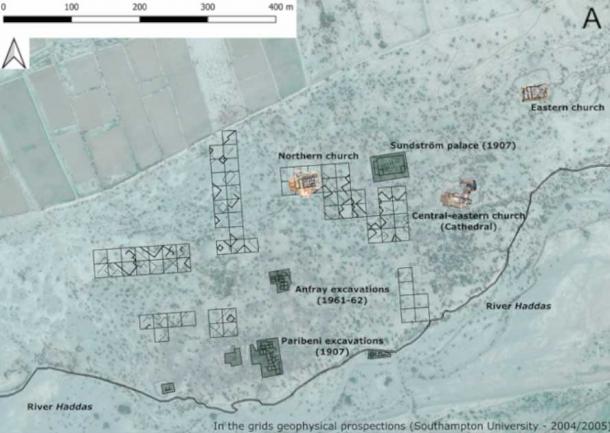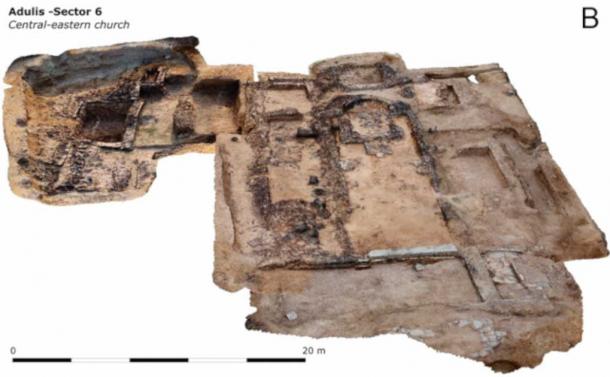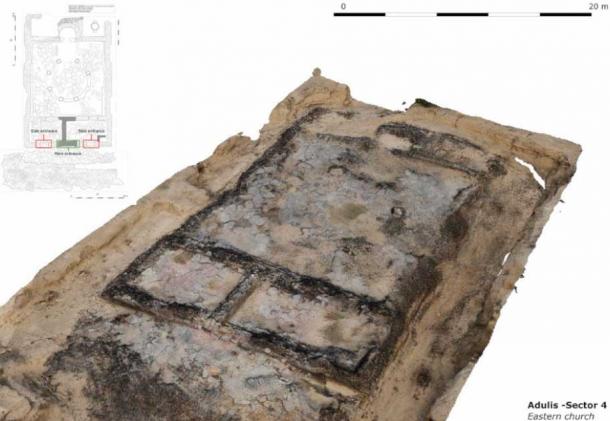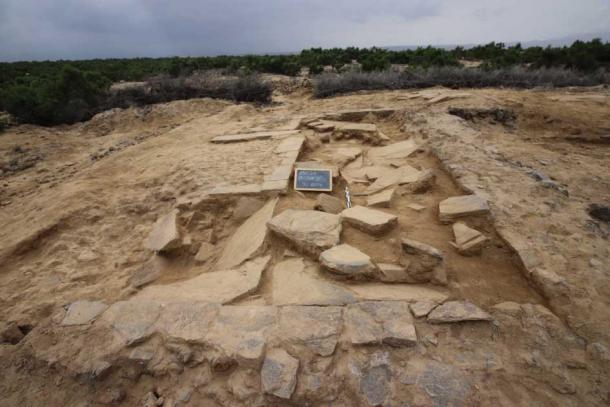
Two Aksumite Churches Reveal Complex Religious History of East Africa
Fresh excavations in the port city of Adulis on Eritrea’s Red Sea coast have produced evidence showing that two ancient churches unearthed more than a century ago were constructed during the reign of the legendary Kingdom of Aksum, which ruled Northeast Africa throughout the entire first millennium AD. Thanks to a detailed analysis performed by a team of archaeologists from the Vatican-sponsored Pontificio Instituto di Archeologia Cristiana, the two ancient religious structures have finally been dated to the mid-1st millennium AD, with dates of construction that began no later than the 6th and 7th centuries respectively.
Notably, the Kingdom of Aksum (or Axum) only converted to Christianity in the 4th century AD. As the study authors explain in a new article published in the journal Antiquity, securely dated churches from Aksum’s early Christian days have been extremely difficult to find, which makes this a highly important discovery.
- Hidden Religion: Abba Yohani and the Clandestine Cave Churches of Ethiopia
- Ten of Africa’s Most Powerful Kings, Queens, Warriors and Legends
Christianity in the Kingdom of Aksum
At its height of power, the Aksumite Kingdom ruled much of the northern Horn of Africa along with a huge swath of territory in Southern Arabia. The kingdom was a contemporary of the Roman Empire, and in fact functioned as an important way station or crossroads that linked traders from Rome and India, and from all points in between.
Following a trend that was increasingly common in the Mediterranean region and beyond, the fourth-century Aksumite leader King Ezana converted his kingdom to Christianity after ascending to the throne in 320 AD. The first round of Aksumite church construction would have begun shortly after that, beginning in the center of the empire (in or around the capital city of Aksum) and spreading out into more far-flung areas of the kingdom after that.
The two ancient churches were actually found during separate excavations at different sites in Adulis, which is deserted now but was once a thriving northern Red Sea port city.

The site of Adulis (S. Bertoldi and G. Castiglia / Antiquity Publications Ltd).
The ruins of the first structure were discovered near the center of the ancient city by archaeologists in 1868. When complete and standing this building would have been a grand and elaborate cathedral, and it would have included a baptistry where churchgoers young and old could have been officially converted to the faith.

Photogrammetry of the central-eastern church. (S. Bertoldi and G. Castiglia/Antiquity Publications Ltd).
The second structure was unearthed in the eastern part of Adulis in 1907. This church would have been smaller than the cathedral, but it still would have stood out as a unique addition to the city landscape. A series of columns found at the excavation site revealed it would have been constructed in a circular shape, with a roof built in the shape of a dome.
- Slave Trade and Exotic Animals Made the Ancient Port of Adulis Rich
- The Periplus Of The Ports Of Ethiopia, The Hidden Empire

Overall plan and photogrammetry of the eastern church, and you can make out thew circle of the dome in the main room. (G. Castiglia and S. Bertoldi/Antiquity Publications Ltd).
Dr. Gabriele Castiglia led the Pontificio Istituto di Archeologia Cristiana team during the latest series excavations of the two churches, during which organic samples were taken from the appropriate excavation layers so that radiocarbon dating tests could be performed.
“This study provides one of the first examples of Aksumite churches excavated with modern methods and chronological data coming from modern dating methods,” Dr. Castiglia explained.
The radiocarbon test results, plus a more detailed archaeological examination of the sites, showed that the cathedral would have been built first, between the years the 400 and 535. The domed church would have been erected somewhat later, between 480 and 625.
This makes them among the earliest confirmed Aksumite churches ever found. They are also the oldest churches discovered in peripheral areas of the Kingdom of Aksumite, whose capital city of Aksum was located approximately 100 miles (160 kilometers) inland from the trading mecca of Adulis.
Eastern Africa’s Rich and Diverse Religious Tradition Revealed
“Having a precise chronology for these churches is key to understanding how the process of conversion to Christianity shaped the geographical and cultural area,” Dr. Castiglia stated, summarizing the importance of her team’s discoveries.
From this perspective, the construction of these two striking and ambitious structures in a port city far from the Aksumite capital suggests a relatively rapid spread of Christianity throughout the kingdom. It’s possible that work on the first of the two structures began less than a century after King Ezana’s conversion, which shows the people of the region must have been open to new spiritual belief systems.
Interestingly, the stylistic elements of the churches reveal a broad range of influences. The churches feature architectural touches and design choices that incorporate elements from many traditions. For example, the cathedral was built on a large platform, as Aksumite construction practices typically dictated. On the other hand, the domed church seemed to have been intentionally built to duplicate Byzantine sacred architecture. The Roman emperor and Byzantine Empire founder Constantine’s conversion to Christianity occurred at almost the same time as King Ezana’s conversion, which undoubtedly created an interest in the affairs of the other kingdom within the royal and religious circles of both.

One room excavated near the entrance to the domed church. (S. Bertoldi and G. Castiglia/Antiquity Publications Ltd).
What these stylistic choices suggest is that the churches were not built at the direction of the then-Aksumite king, but were instead constructed to reflect more localized concerns and preferences. Christianity in the port city of Adulis would have evolved organically, in other words, not as a result of edicts issued from central authorities demanding churches be built in a certain way.
The political and economic fortunes of the Kingdom of Aksum declined in the latter half of the first millennium. This ultimately lead to its conquering and destruction in 960 AD by forces under the command of an acclaimed but mysterious warrior-queen named Gudit, who may have been Jewish, pagan or Ethiopian.
At some point before the end of the Kingdom, presumably because of population loss in the city of Adulis, the two churches were abandoned to the forces of nature.
In the second millennium, however, when the people of the region adopted Islam as their religion, the grounds of the cathedral were repurposed as a Muslim burial ground. This development was actually quite extraordinary, according to Dr. Castiglia.
“This is one of the first times we have the material evidence of re-appropriation of a Christian sacred space by the Islamic community,” she noted.
Taken as a whole, the stylistic elements of the two churches and the uses they were put to reveal a complex and diverse religious history in ancient eastern Africa. They also show what a powerful cultural force early Christianity was, as it cast a wide net and spread its society-altering influence in many directions throughout the first half of the first millennium AD.
Top image: Excavation of one of the early churches found in Adulis, which likely served as the city’s cathedral. Source: Antiquity Publications Ltd
By Nathan Falde
















Comments
Constantine's 'conversion' was a case of royal catch-up, with ordinary Romans having spread the faith long before Constantine saw any opportunity in joining suit. Would Ezana's conversion have been likely much different?